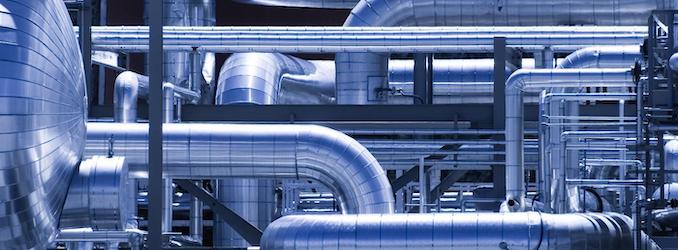October 2022, Vol. 249, No. 10
Government
New Methane Fee Could Hit Pipelines Hard

By Stephen Barlas, Contributing Editor, Washington, D.C.
(P&GJ) — Numerous interstate pipeline companies have facilities that emit enough methane – in some cases much more than enough – to get hit with the new methane fee contained in the Inflation Reduction Act (IRA) President Joe Biden signed in August.
The new methane program could impose a fee on facilities that emit 25,000 metric tons carbon dioxide equivalent (CO2e) or more per year, starting at $900 per metric ton in 2024 and increasing to $1,500 per metric ton by 2026.
The IRA’s Methane Emission Reduction Program builds on the U.S. Environmental Protection Agency’s (EPA) existing Greenhouse Gas Reporting Program (GHGRP). Approximately 8,000 petroleum and natural gas facilities are required to report annual emissions under GHGRP.
Natural Gas Pipeline Co., jointly owned by Kinder Morgan Inc. and Brookfield Infrastructure Partners L.P., lists numerous facilities in numerous states with significant emissions in 2020: 188,636 metric tons in Iowa, 145,287 in Illinois, 106,758 in Texas. El Paso has an Arizona facility with 139,723 metric tons. Other big numbers come from ANR: 77,270 in Indiana and 67,531 in Kansas. Columbia Gas as an Ohio facility with 132,775 tons.
The Congressional Budget Office estimates that the methane fee will generate gross revenue of approximately $1.1 billion in fiscal year 2026, peaking at approximately $1.9 billion in fiscal year 2028. That is total fees for the entire petroleum and natural gas category, which includes:
- offshore petroleum and natural gas production
- onshore petroleum and natural gas production
- onshore natural gas processing
- onshore natural gas transmission compression
- underground natural gas storage
- liquefied natural gas storage
- liquefied natural gas import and export equipment
- onshore petroleum and natural gas gathering and boosting
- onshore natural gas transmission pipelines
The biggest methane emission culprits are onshore producing, and gathering and boosting, both, based on 2020 figures, emitting 90 mtpa per year. The two pipeline categories total 33 mtpa, or 10% of the 316 mtpa for all 11 subcategories.
How big a fee a pipeline pays won’t be determined exclusively based on a facility’s total emissions. For natural gas transmission facilities, the fee applies to methane emissions that exceed 0.11% of the natural gas sent for sale from or through the facility.
In addition, facilities will be exempt from the fee if they comply with a forthcoming EPA regulation on methane emission controls if those final regulations now being considered by EPA (1) are in effect in all states and (2) would “result in equivalent or greater emissions reductions as would be achieved” by the November 2021 proposed rule.
The pipeline industry strongly opposes that proposed rule, of which some provisions are considered unworkable. Chief among them is a 95% volatile organic carbon (VOC) and methane reduction requirement from centrifugal wet seals to all existing sources as of November 15, 2021.
In a Jan. 21 letter to EPA, Michael Pitta, vice president of EHS at Kinder Morgan, told EPA, “the 95% reduction standard is unworkable and untethered from real-world application of such controls, which have not been demonstrated.”
With regard to the impact of the 0.11% exceedance floor, no one seems to know how that will affect the fee. Katherine Hill, a spokeswoman for Kinder Morgan, says her company is waiting for guidance on that question.
TC Energy, which owns ANR and numerous other pipelines in the United States, did not respond to an inquiry about the potential impact of the new methane fee.
A spokeswoman for the Interstate Natural Gas Association of America (INGAA) said, “It is premature to speculate on the specifics of how the methane fee will work because EPA has a few outstanding rulemakings which might impact the calculation of the methane fee.”
EPA could not provide any details on how the methane fee will work, either. Shayla Powell, an agency spokeswoman, says, “EPA is currently reviewing the new law and determining next steps.”






Comments